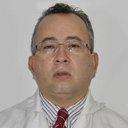Anticariogenic activity of the active fraction from Isertia laevis against S. mutans and S. sobrinus: comparison of two extraction methods.
Nyckelord
Abstrakt
Dental caries is considered a multi-factorial, infectious, chronic, localized, post-eruptive, transmissible disease that leads to the destruction of dental hard tissue. The recognition of Streptococcus mutans as the major bacterial species involved in dental caries has led to the implementation of prevention and control measures for eliminating or reducing it in oral cavity. The main goal of research on medicinal plants is the search for substances or compounds with antimicrobial activity. The aim of this study was to evaluate the antimicrobial activity of fractions obtained by two methods from Isertia laevis against S. mutans and S. sobrinus. The plant material was collected in Medina (Colombia), at an elevation of 550 meters above sea level. From the ethanol extract of leaves of I. laevis, fractions were obtained by two methods: extraction by column vacuum chromatography (CVC) and extraction by continuous liquid/liquid partitioning (CLLP). The evaluation of the antimicrobial activity of fractions against S. mutans and S. sobrinus was performed by well diffusion and bioautography assays. From the CVC technique, only the methanol and methanol-dichloromethane fractions showed activity against S. mutans and S. sobrinus, with a minimum inhibitory concentration of 2 mg/well. From the CLLP technique, only the dichloromethane fraction showed activity against both microorganisms, with a minimum inhibitory concentration of 1 mg/well. Compounds C1 and C2 were isolated from the three active fractions, and showed a minimum inhibitory concentration of 0.4 mg/well for S. mutans and S. sobrinus, with zones of inhibition measuring 6.5 and 6.2 mm, respectively.
CONCLUSIONS
1) the three active fractions of I. laevis showed activity against S. mutans and S. sobrinus, 2) compounds C1 and C2 were presen equally in the three active fractions showing activity against the two bacteria, 3) compounds C1 and C2 may be triterpenoid and/or steroidal saponin structures, and 4) the two extraction methods lead equally to obtaining the active fractions.


